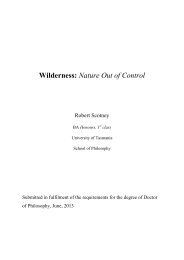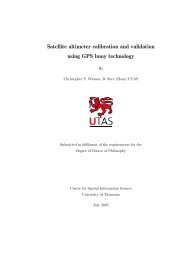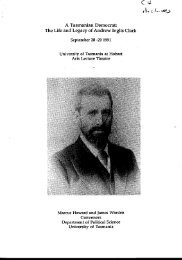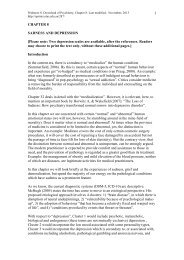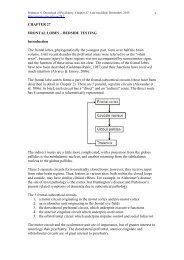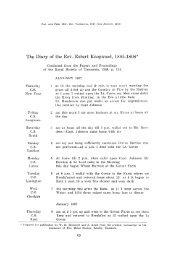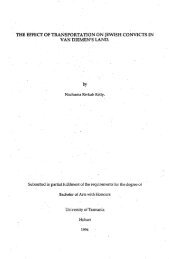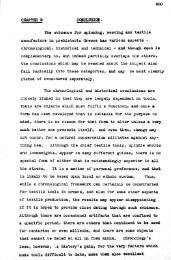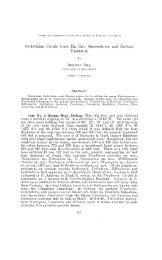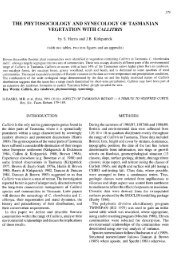Chapter 5 HALLUCINATIONS Hallucinations are ... - UTas ePrints
Chapter 5 HALLUCINATIONS Hallucinations are ... - UTas ePrints
Chapter 5 HALLUCINATIONS Hallucinations are ... - UTas ePrints
Create successful ePaper yourself
Turn your PDF publications into a flip-book with our unique Google optimized e-Paper software.
Pridmore S. Download of Psychiatry, <strong>Chapter</strong> 5. Last modified: November, 2013.<br />
http://eprints.utas.edu.au/287/<br />
2<br />
<strong>Hallucinations</strong>, usually of the name being called, <strong>are</strong> sometimes heard by healthy people<br />
as they pass from waking to sleeping (hypnogogic) and from sleeping to waking<br />
(hypnopompic hallucinations).<br />
Thus, healthy people may, from time to time, hear voices. C<strong>are</strong> has been taken in these<br />
paragraphs to avoid calling these experiences, hallucinations, even though these<br />
experiences satisfy the technical definition.<br />
Briefly, there <strong>are</strong> usually differences between the voices heard by healthy individuals and<br />
the hallucinations of those with mental disorders. In healthy individuals, the voice is<br />
usually as if from one person, speaking comprehensibly, in a helpful and comforting<br />
manner. Auditory hallucinations in mental disorders, in contrast, may involve more than<br />
one voice, sometimes arguing, sometimes commenting about the patient, frequently<br />
making little sense, often in a threatening or frightening manner.<br />
<strong>Hallucinations</strong> associated with non-mental disorder conditions<br />
Frederic Chopin experienced hallucinatory episodes throughout his life: a case has been<br />
made that these were a feature of epilepsy (Vazqez & Branas, 2011).<br />
Charles Bonnet syndrome is the experience nonthreatening visual hallucinations in<br />
patients who <strong>are</strong> free of neurological and psychiatric disorder, who have significant<br />
visual impairment secondary to ocular disease (Jackson & Madge, 2011). Other forms of<br />
sensory deprivation and fatigue may also lead to hallucinations.<br />
<strong>Hallucinations</strong> occur in Neurocognitive disorders – most frequently in Dementia with<br />
Lewy Bodies and Parkinson’s disease dementia (Ballard et al, 2013).<br />
Illegal drug use is commonly motivated by the desire to experience hallucinations and<br />
illusions (visual, auditory, somatic, tactile; Cruz & Dominguez, 2011).<br />
<strong>Hallucinations</strong> may also occur with some medically prescribed medications, for example,<br />
the anaesthetic drug ketamine, and some of the drugs used in the treatment of Parkinson’s<br />
disease. With illegal hallucinogen use, hallucinations <strong>are</strong> desired and achieved; less<br />
desired <strong>are</strong> those of Hallucinogen Persisting Perception Disorder, a condition which may<br />
appear when use has ceased. <strong>Hallucinations</strong> may occur with many brain disorders<br />
including tumour, multiple sclerosis and dementia. In the conditions mentioned in this<br />
section, visual hallucinations <strong>are</strong> the most common.<br />
<strong>Hallucinations</strong> in mental disorders<br />
Pathological hallucinations take many forms.



